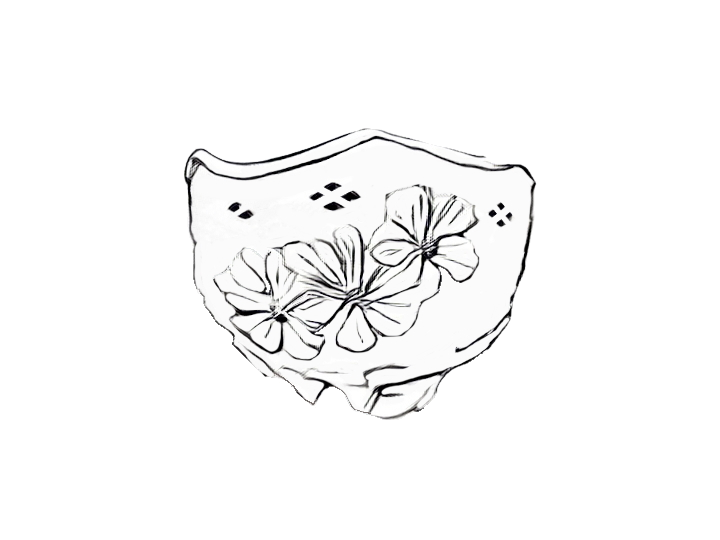The techniques
This page briefly speaks to the differences in techniques that I use and the results that I am aiming for.
Between low or high temperature, electric firing, gas or raku firing, the intentions and possibilities are different. The same goes for a polished and smooth piece, or a piece cut with a knife, or even a decorated and stamped piece... each technique has its own personality and its own intention. A preference, a sensitivity, a beauty.
Building techniques
-

Wheel throwing
Wheel throwing examplesMade by the great masters, wheel throwing looks so simple, fluid and elegant. This technique requires a real mastery of techniques, clay and flawless concentration.
The wheel allows the ceramist to create perfectly symmetrical shapes, which can remain round or can be modified or altered, allowing a good distribution of the masses and a homogeneity of the wall.
-

Pinched clay
Pinching clay allows the ceramist to create small expressive pieces to be made fairly quickly. This technique consists of taking a mass of clay, pinching the clay between two fingers and then gradually expanding to shape the object. It is quite difficult to make large, regular and homogeneous clay pieces. However, the pinched clay makes it possible to make various pottery items such as bowls, cups... quickly and without a wheel.
-

Plate and coil construction
Here is another technique that has the advantage of not requiring a wheel. This technique requires the assembly of carefully prepared plates or coils. Unlike pinched earth, this technique makes it easy to make larger pieces.
The coil technique, often presented as a beginner's technique, on the contrary, requires great experience to allow the production of regular pieces.
Firing techniques
-

Electric kiln firing
While wood-firing used to be the most common firing method, electric-oven firing is the most common method today.
Electric-oven firing is easier to use and makes it possible to manage complex temperature curves thanks to precise temperature regulation. The electric potter's kilns also allow rapid and reproducible firing. However, this firing method is not without complexity and also has technical and results limits.
For a young ceramist, this firing method is reassuring with the possibility of more easily controlling the firing and the expected result.
-

Raku firing
Raku is the result of a glazing technique more than a firing method. This requires prior biscuit firing before really experimenting with the raku technique.
The specific raku glaze is applied, the item is fired in turn in a low temperature Raku kiln (980 - 1000°C). The object is taken out of the kiln, glowing, still red and incandescent. It is then covered with flammable materials such as sawdust, paper or dry leaves.Cracks specific to the firing raku are formed during the thermal shock between the internal temperature of the oven (1000°C) and the outside temperature, as well as the contraction / expansion of clay and glaze at different speeds.
-

Wood-fired oven and pit firing
Probably the oldest technique. Pit firing pottery with wood or other natural combustibles seems to be simple and "natural". However, this technique requires a lot of mastery and is not so easy to use repeatedly. Pit firing however limits the glazes and techniques used.
On the other hand, cooking in a wood-fired kiln requires a lot of fuel (wood). Vegetable ashes can also, in some cases, be used for glaze purposes. This firing method remains an dream and a longer term plan or project for later.






